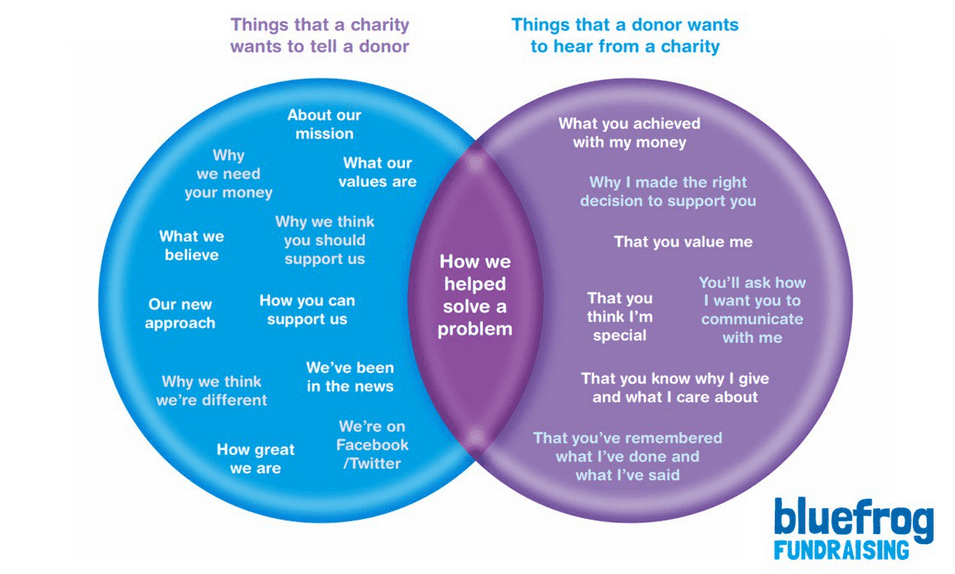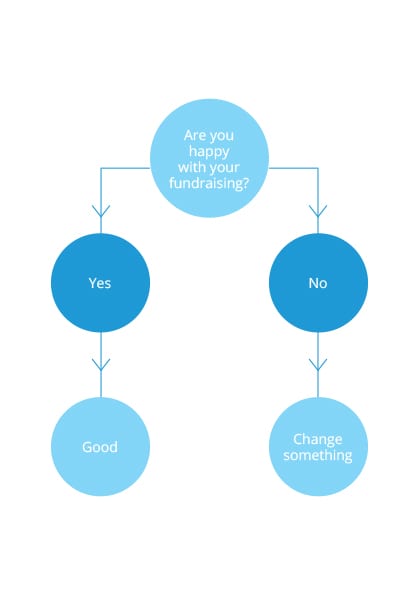Why does it always have to be un-earmarked?
Which of the following statements are true?
- The earth is flat.
- Global warming isn't happening.
- Lemmings commit mass suicide.
- Wearing a warm coat will stop you catching flu.
- Warts are caused by handling toads.
- Appeals have to be for unrestricted funds.
Yep. You got it. It's a trick question. They are all wrong.
But that doesn't mean there are some people and some organisations that accept them as unquestionable truths. You have The Flat Earth Society leading their own particular debate,Tim Ball on climate change, Walt Disney documentaries on suicidal lemmings and my grand-mother on the anti-viral properties of warm coats and the dermatological benefits of avoiding HPV laden toads.
And you have a large number of charities that will only do unrestricted appeals.
It's an attitude I've often questioned.
I appreciate that it's normally the statutory funders, trusts and high-value givers that get to dictate how their money is used. This leaves the normal donor as the primary source of much of the administrative and fundraising expenditure that underpins the juicy work that the "serious"funders get to make happen. This income is essential, as without it, much less money would be raised.
All charities need unrestricted funds and if this needs to come from the average donor, then our fundraising strategies must take this into account. But the fact is, not many people are keen on donating too much for covering administration and fundraising costs.
Doble (PDF) found back in 1990 that donors were happy if at least 75% of their gift was applied directly to the cause (though they thought the norm for most charities was as low as 50%) and Glaser (PDF) in 1994 discovered that an "adequate amount" spent on actual work was the second most important factor in influencing the decision whether to support a charity.
In recent (2009) experiments Fong and Oberholzer-Gee (PDF) found that a significant number of donors were willing to pay "extra" to ensure their money was used in the way they preferred.
That's why I ask whether every appeal has to be restricted.
Recruitment can be pretty tough at the best of times. Currently we are seeing some charities struggle to get new donors and there are an increasing number of direct debits being cancelled.
One option to improve this situation is to recruit and re-activate lapsed donors with the guarantee that 100% of the gift will go to core work.
To me, this seems like a simple solution to a big problem. Recruitment income is tiny compared to the overall amount generated by a charity and by taking this approach, an organisation would:
- Stand out from other organisations.
- Recruit more donors and generate more funds.
- Give new (or re-activated) donors an enhanced sense of achievement.
- Have a great opportunity for feeding back, placing the donor at the centre of their work.
- Create a connection on which to move the donor to committed and de-restricted forms of giving.
- Demonstrate efficiency, accountability and effectiveness which I think are rather attractive values for any charity brand.
- Generate more un-earmarked money long term by improving their recruitment and retention rates.
The downside is that finance staff would have to change the way they work and some big funders might not get 100% of all the great projects.
To me, that isn't such a big price to pay.
But I can hear the arguments against already – we can raise that money elsewhere, the systems will have to be changed, we don't have the resources, what if we raise too much?
Yep – it's easy to come up with the reasons why not. And it is certainly not something I'd suggest raising in a quick conversation with an FD between meetings.
But if we view the problem of recruitment and disengagement strategically, we might find the finance operation can offer part of the solution.
It will take some hard work. But with organisations like KIva growing at a fantastic rate by offering choice over how money is allocated and what percentage is added to cover administrative costs, it might not be too long before charities have to start changing the way they work for reasons other than improving recruitment and tackling disengagement.
Donors are already getting increasing amounts of choice in how they give to the causes they care about. And it's those charities that respond most effectively to the changing environment that are going to succeed.
Which brings me back to those lemmings. Anyone need a life belt?
Tags In
Related Posts
2 Comments
Comments are closed.
The Essentials

Crack the Code to Regular Giving: Insights, Strategies, and a Special Giveaway!

‘Tis Halloween. Keep to the light and beware the Four Fundraisers of the Apocalypse!

Why do people give? The Donor Participation Project with Louis Diez.

A guide to fundraising on the back of a postcard

What does the latest research tell us about the state of fundraising?










I completely agree. Charities need to treat donors much more like imformed investors – otherwise donation rates will continue to fall. Taking a hit in the amount of unrestricted income is a price worth paying.
Thanks Will.
It’s a message that will get louder and louder as new players enter the charity market.